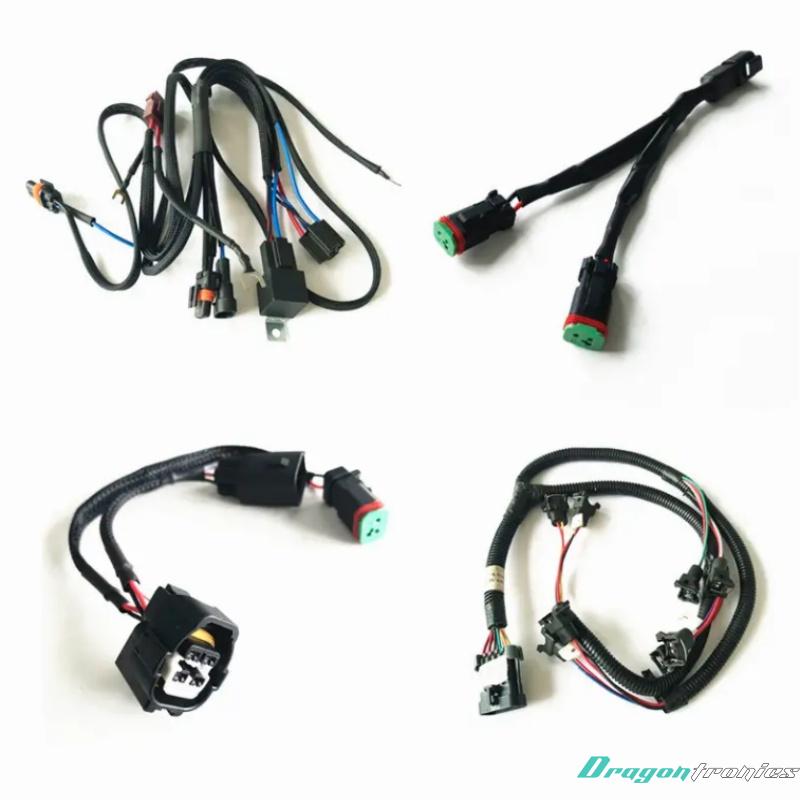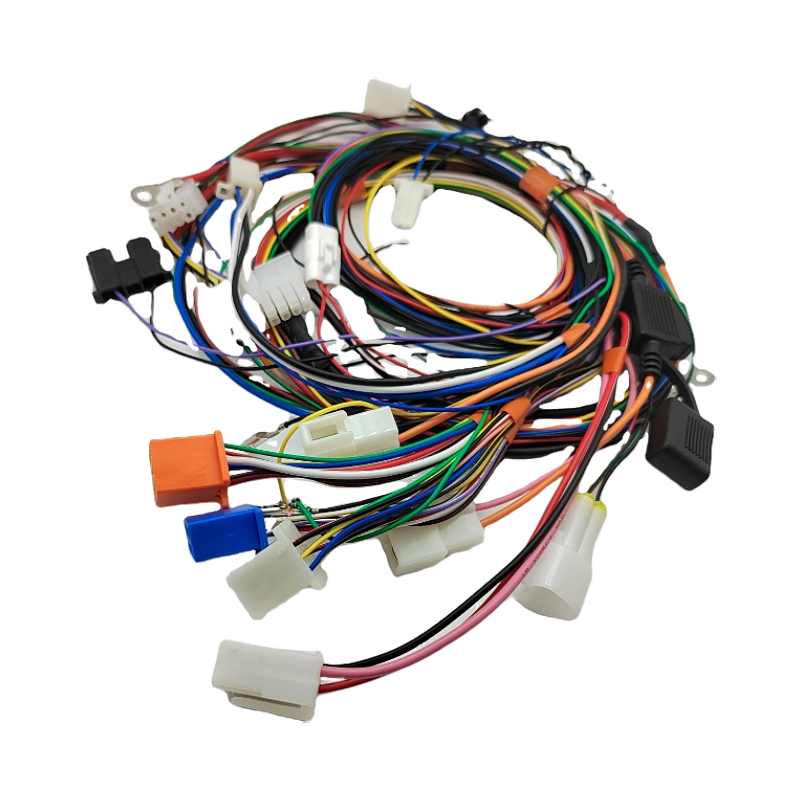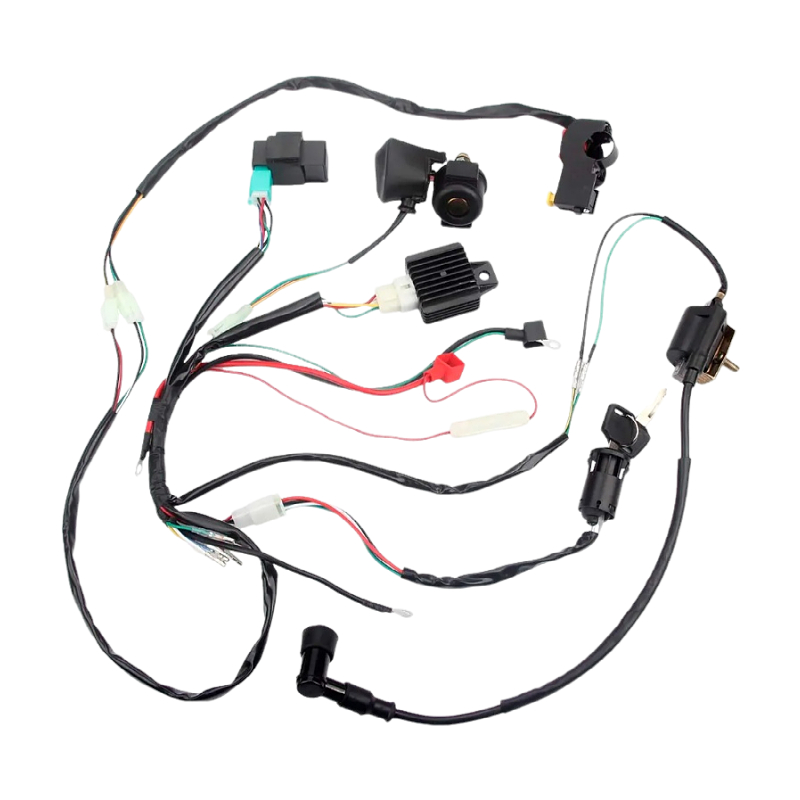Automotive Cable Assembly
Professional Custom Automotive Connector Wiring Harness Factory High Quality Air Conditioner Wire Harness
- Product description: Professional Custom Automotive Connector Wiring Harness Factory High Quality Air Conditioner Wire Harness
An Air Conditioner (AC) Wire Harness is a pre-assembled collection of wires, connectors, and components that form the electrical connection system in an air conditioning unit (whether residential, commercial, or industrial). The wire harness allows the various components of the air conditioner (such as the compressor, fan motors, thermostat, sensors, and control boards) to communicate with each other by providing a secure and organized pathway for electrical power and control signals.
In simpler terms, the wire harness in an air conditioner ensures that all the electrical parts of the system work together seamlessly and safely.
Key Components of an Air Conditioner Wire Harness:
1. Wires:
o The wires in the harness carry electrical power from the power supply to various parts of the air conditioning unit, such as the compressor, fans, sensors, and control boards. The wires can be made from materials like copper and are insulated to prevent short circuits or electrical faults.
2. Connectors:
o Connectors allow for easy and secure connection of different components in the AC system. These can include connectors for the compressor, thermostat, fan motors, capacitors, and control boards. The connectors are typically designed for quick connection and disconnection during installation or repairs.
3. Fuses and Relays:
o Fuses and relays are included in the wire harness to protect the AC unit from electrical overloads or shorts. A fuse will blow if the current exceeds safe levels, preventing damage to the system. Relays help control the flow of electricity to different components, often used for switching high-power components on and off (like the compressor).
4. Terminals:
o Terminals are the metal contact points where wires are connected to electrical components. These are designed to ensure a stable and secure connection for reliable power and signal transmission.
5. Insulation:
o The wires in the harness are often insulated with rubber, plastic, or other materials to protect them from heat, moisture, or physical damage and to prevent electrical shorts. This is crucial for an AC unit, which can operate in hot and humid environments.
6. Grounding:
o A grounding wire in the harness helps ensure the safe dissipation of excess electrical charge, preventing electric shocks or damage to components.
Functions of an Air Conditioner Wire Harness:
1. Power Distribution:
o The wire harness carries electrical power from the power supply to all the critical components of the AC unit, such as the compressor, fan motors, and evaporator/condenser coils.
o It ensures that each part of the system gets the necessary electrical power to operate effectively.
2. Signal Transmission:
o The harness also carries control signals between the thermostat, control boards, and other sensors. This allows the thermostat to communicate with the compressor, adjusting the system’s operation based on temperature readings.
3. Safety:
o The wire harness is designed to include safety features such as fuses and relays that protect the components from electrical damage. If there is an electrical overload, the fuse will blow or the relay will cut off the power, preventing damage to the AC unit or fire hazards.
4. Control and Communication:
o The wire harness helps in the communication between the AC’s control systems (like the control board or smart thermostat) and its components. This could involve feedback signals from temperature sensors, humidity sensors, and other monitoring systems that help the AC function optimally.
Applications of an Air Conditioner Wire Harness:
1. Residential Air Conditioners:
o In standard home air conditioning systems, the wire harness is responsible for connecting components like the compressor, indoor/outdoor fans, thermostat, and control boards.
2. Commercial HVAC Systems:
o In larger commercial or industrial air conditioning systems, the wire harnesses are used to wire multiple components across expansive systems. This could include cooling units in large office buildings, factories, or server rooms.
3. Split AC Systems:
o For split-system AC units, the wire harness connects the indoor evaporator unit with the outdoor condenser unit. This includes the wiring for power, control signals, and safety systems between the two units.
4. Heat Pumps:
o In systems where the air conditioner also functions as a heat pump, the wire harness may include additional connections for reversing valves, auxiliary heating elements, and other features that allow the system to provide both heating and cooling.
5. Window AC Units:
o Small window air conditioners often use compact wire harnesses that connect the internal components, such as the compressor, fan motors, and thermostat, within the unit itself.
Conclusion
An Air Conditioner Wire Harness is a critical component that ensures the proper functioning of the electrical system in an AC unit. It distributes power, transmits control signals, and helps maintain the safety and reliability of the system. Whether in a home AC, commercial HVAC system, or industrial unit, a properly designed wire harness is essential for ensuring that all components of the air conditioner work together seamlessly to provide cooling or heating.
Categories
Latest News
Contact Us
Contact: Fiona Wu
Phone: 86 - 173 28414 818
Tel:
Add: 20, Changtian Road, Hengli, Dongguan, Guangdong, 523852, China




 Lankecms
Lankecms lankecms
lankecms
 Lankecms
Lankecms